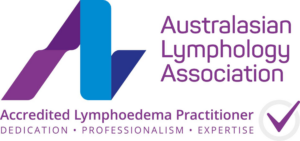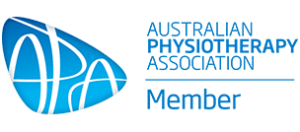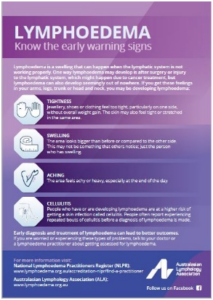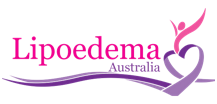
About Us



About Care And Cure Wellness
Sujatha Sugumaran (Suji) – Director – Principal Physiotherapist and Lymphoedema Practitioner (accredited by Australasian Lymphology Association)
Sujatha (Suji) is the Director and principal physiotherapist at Care and Cure Wellness clinic providing Lymphoedema management and Musculoskeletal Physiotherapy services to the community (South of the river). Suji is a highly experienced physiotherapist with over 18years of expertise in the field.
Suji migrated to Perth and started her own clinical practice in August 2024, after previously working at various clinics in Perth, New Zealand and running her own physiotherapy practice back in Auckland (New Zealand). Suji has built a strong reputation for her specialization in treating musculoskeletal conditions, sports injuries, and general physiotherapy needs.
Sujatha (Suji) has particularly gentle hands and is very calm and listens to patients especially when dealing with senior citizens, children and young adults. Suji is very much aware of patients fear of pain and will do everything possible to achieve their goals and make them feel good.
Suji’s dedication to patient recovery and the many success stories from word-of-mouth referrals speak volumes about her expertise, professionalism and compassionate approach to care.

Sujatha Sugumaran (Suji) qualifications include:
- Member of Australian Physiotherapy Association - Registered under AHPRA
- Australasian Lymphology Association Accredited Lymphoedema Practitioner
- Graduate diploma in Health science – Auckland University of Technology – New Zealand
- Bachelor of Physiotherapy
- Spinal Manipulation (AUS),
- Dry Needling
- Clinical Pilates and Rehab
- Women’s Health Training Associates Level 1
- Matrix-Rhythm-Therapy – Melbourne, Australia


Care And Cure Wellness
Faq

This is tissue swelling caused by a defect of the lymphatic system which is a part of the immune and circulatory system. Lymphoedema can arise from primary or secondary causes.
Primary causes are congenital in origin that can manifest at different stages of life. That is, at birth, teenage or later in life commonly middle age. Do you have other family members that have similar presentations as you?
The other causes can be Secondary due to trauma; injury; surgery including removal of lymph node(s) in cancer, hip/knee replacement; vascular procedures e.g. vein stripping; radiotherapy, infection, being wheel-chair bound or simply being severely overweight.
There are other conditions that may appear to Lymphoedema, too. Once you have received medical assessment and clearance by your doctor, Suji can help you work out what the possible cause is and how to address the condition.
For a person who has been treated for cancer where the lymph nodes have been sampled, removed or irradiated, there may be swelling in the closest limb and the quadrant of the trunk which adjoins the surgery. More specifically, if the groin or abdominal lymph nodes have been affected, the leg on that side, the lower abdomen, buttock and genitals may be swollen. If the armpit lymph nodes are affected, then the arm, chest and upper back on that side may be swollen.
The swelling normally starts at the top of the limb or on the trunk and may be very variable at first, increasing with activity or during the day and disappearing overnight. As time progresses, the swell tends to spread lower on the limb and remains longer. Also, the nature of the swelling will change from pitting oedema (depression left by finger when swelling is pressed) to a more fibrotic (more wooden) oedema.
For arm lymphoedema, often the first complaint is of being unable to put the arm close by the side. Many women feel as though there is a ball of swelling at the back of the armpit. Otherwise, it is often noticed if jewellery becomes tight, or the tendons on the back of the hand become obscured by swelling.
Leg lymphoedema is often picked up when underwear or trousers become tight on one leg, or there is a greater dent from socks or stockings.
Lymphoedema is NEVER the cause of sharp, severe pain unless the swelling results in compression of nerves. Many people complain of aching, heaviness, tightness or a bruised feeling in the swollen area.

We understand unexplained ongoing swelling in the leg(s) or any part of the body can be distressing. Many things can cause swelling e.g. a clot, medication. Did your doctor give you a diagnosis of lymphoedema? Otherwise, we recommend that you seek a thorough medical check-up and clearance prior to making an appointment with us. This is because it is important to determine the cause of your swelling as treatment will differ. Our clinician will assess and examine you at the first appointment.
Chronic swelling that is not a result of lymph node damage can also be lymphoedema. Lymphoedema is simply oedema (fluid retention) which results from an impairment of the lymphatic system. There are various genetic (inherited) conditions which result in poor development of the lymphatic system, these may become apparent at birth, at puberty, or later in life when we start slowing down or sustain an injury. The oedema can range from a swollen ankle following a plane flight which persists for a couple of hours once you become active again, to grossly swollen limbs which limit movement and hygiene, and make buying clothing and footwear extremely difficult.
Chronic swelling which is caused by heart disease, liver disease, or kidney disease is not lymphoedema, and should be managed by your medical specialist.
When a part of the body is injured, there will be a certain amount of leakage of blood from broken capillaries, as well as an infiltration of repair materials to mend the rift. This is seen as bruising and swelling. When this occurs, the lymphatic system will then increase the rate of drainage to clear out the leaked blood and damaged tissue. Once this has gone the swelling will subside. If the lymphatic system is damaged in the injury, or there is excessive damaged tissue, some of the waste may congeal before the lymphatic system can remove it. In this case there may be persistent swelling.
Heart failure, kidney failure, varicose veins and arthritis are also associated with swelling. These occur for various reasons, but it is still the lymphatic system which is usually responsible for returning the fluid from the swelling back into the circulation.
No! Occasionally patients are angry that healthy lymph nodes have been removed or destroyed when that person has ended up with lymphoedema. Unfortunately, lymph node sampling is the least invasive, early way to determine if there is a likelihood of the tumour already having spread. If the lymph nodes are simply left when they do have tumour cells present, the resulting tumour growth will definitely result in a lymphoedema which is very hard to control. Surgical methods are improving for minimising the lymph node damage, such as a sentinel node biopsy prior to clearance of lymph nodes. If the sentinel lymph node is clear of tumour cells at the time of surgery, then there is a good chance that the rest of the lymph nodes will also be clear. In this case the surgeon may elect not to complete the lymph node clearance.
No. All private health insurance or no private health insurance patients, can simply book in online with us.
We are able to determine whether you require further medical care after thorough assessments.
Exception:
However, if you seek to use the Medicare Chronic Disease Management plan, then you are required to obtain a GP referral.
No, if it is managed properly.
A ‘Pinched nerve’ represents the nerve reaction at the time. This can be due to constant irritation by either a structural or chemical pressure, leading to increase of mechano-sensitivity of the nerve.
When the nerve is sensitised or very sensitive, it is possible to give out referring symptoms either your arms or legs from neck or lower back spine.
Initially, it can start off just with constant referring dull ache. Next stage could evolve into constant or intermittent pins and needles feeling or numbness sensation. If in worse scenario, it can even reproduce some weakness, affecting your normal daily activities.
But because it is a nerve sensitivity problem, we can reduce symptoms by reducing the overall sensitivity, and that can HELP us in relieving symptoms.
To relieve the symptoms, our physiotherapists can help you with manual techniques, joint mobilisation techniques, and nerve floss exercises to reduce its sensitivity. By practicing these exercises regularly, this should help in reduction of referring arm or leg pain symptoms in the long-term management.
If still unsure with your diagnosis, or your symptoms are not improving, speak to us today!
No. ‘Slipped disc’ is very commonly heard or used. But it does not actually mean that the disc is ‘out of place’.
It usually refers to part of the ‘jelly substance’ between disc, which is composed of ‘Nucleus pulposus’ + ‘annular fibrosus’
When the nucleus pulposus is mechanically compressed, it could irritate surrounding lumbar structures and produce strong sharp pain locally, or even referring symptoms in legs or feet. In severe cases, it can reproduce numbness or tingling and altered sensation.
This ‘jelly substance’ normally performs shock absorption as we weight bear and walk in daily activities.
Although the ‘jelly substance’ between the disc is being compressed, it normally could resolved itself about 8 months to 1 year timeframe, even without getting any treatment.
In physiotherapy, we can help with relieving some symptoms that is sensitised by the ‘pushed jelly substance’ into your lower back/ referring leg symptoms. We are also able to provide strengthening program of lower back/ gluteal muscles and legs at the same time. We are not able to ‘pushed’ or ‘fixed’ the substance back into place physically. With physiotherapy input, we will be able to manage symptoms much easier in your daily activities.
If you think the above similar symptoms yourself, speak to us today!
Yes, they are safe to be performed by qualified professionals.
Dry needling is additional qualification for physiotherapist and other health professional to incorporate into all-rounded treatment. This is a highly effective treatment technique to improve the tightness and tone in the muscle and reducing pain experienced by patient.
We see dry needling as the westernised way of acupuncture which targeting local area. It serves to improve the integrity of the local structures, like muscle, tendon and ligament. The rationale of dry needling is quite different comparing to the traditional acupuncture, which focus on the body system and the flow of ‘chi”.
Suji is also qualified dry needling therapist.
We will check to ensure dry needling is appropriate for you before we perform our treatment. Some examples of people who are not appropriate for needling includes:
- In a patient with needle fobia.
- Patient unwillng – fear, patient belief.
- Unable to give consent – communication, cognitive, age-related factors.
Yes. We can treat vertigo.
The most common cause of vertigo is BPPV (Benign Paroxysmal Positional Vertigo), and vestibular dysfunction. Both conditions can be treated by physio.
What causes it?
It is a disorder caused by imbalanced of fluid in our vestibular system, which is also known as our inner ear system. The imbalance could be caused by a ‘crystal’ blocking the normal flow of fluid in our inner ear system. Therefore, leading to increase of spinning type of dizziness.
What is vestibular system for?
Vestibular system is very important as it is responsible for all positional and proprioception of our body, deciding the balance point in various positions. For instance, counteracting body balance when walking on uneven surfaces, walking with a lot of dynamic or directional changes, or walking in crowded environment.
How do we treat them?
We provide various manual manoeuvres that can dislodge and speed up normal fluid flow in our inner ear system.
We will provide balances exercises improve the equilibrium and desensitise the abnormal symptoms and dizziness.
Structures of your body recovery at different rate.
- Muscle 2 weeks to 3 months
- Tendon 4 weeks to 3 months
- Ligament 2 weeks to 2 years
- Bone 5 weeks to 3 months
It is also important to understand the extend of injury to determine the prospective time frame. We will be able to assess and tell you how long until you can go back doing what you love.
We will also outline the treatment plan including what we can do and what you need to do over the course of recovery.
YWCA Encore
YWCA Encore is an exercise program designed specifically for women who have experienced breast cancer at any time in their lives:

Australian Lymphology Association
The Australian Lymphology Association is the representative body for lymphoedema clinicians in Australia:

International Lymphoedema Framework
A dedicated platform for the lymphoedema community
I L F
MQ Health Clinic, Macquarie University
ALERT
The ALERT (Australian Lymphoedema Education, Research and Treatment)Program at Macquarie University.
Karen Herbst
A good information page about lipoedema. Karen Herbst is an american researcher at the University of Arizona
Lipoedeama Australia
Information and resources for lipoedema

